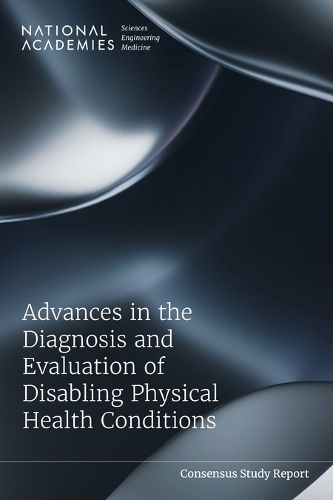Readings Newsletter
Become a Readings Member to make your shopping experience even easier.
Sign in or sign up for free!
You’re not far away from qualifying for FREE standard shipping within Australia
You’ve qualified for FREE standard shipping within Australia
The cart is loading…






The U.S. Social Security Administration (SSA) provides benefits to adults and children who meet the eligibility requirements for a disability as described in Title II and Title XVI of the Social Security Act. To determine whether more accurate or precise techniques exist for determining if a previously evaluated physical impairment is either more or less severe, SSA requested the National Academies assemble a committee to review new or improved diagnostic or evaluative techniques that have become generally available within the past 30 years for cardiovascular, neurological, respiratory, hematological, and digestive conditions. The resulting report presents a summary of the evidence and information around a selected subset of diagnostic and evaluative techniques.
Table of Contents
Front Matter Summary 1 Introduction 2 Diagnosis, Evaluation, and Disability 3 Overview of Selected Techniques for Diagnosing and Evaluating Patients 4 Techniques for Cardiovascular System Disorders 5 Techniques for Neurological Disorders 6 Techniques for Respiratory Disorders 7 Techniques for Hematological Disorders 8 Techniques for Digestive System Disorders 9 Findings and Conclusions Appendix A: Examples of Functional Criteria in the Social Security Administration's Adult Listing of Impairments Appendix B: Selected Functional Assessments for Debilitating Neurologic Conditions Appendix C: Biographical Sketches of Committee Members
$9.00 standard shipping within Australia
FREE standard shipping within Australia for orders over $100.00
Express & International shipping calculated at checkout
The U.S. Social Security Administration (SSA) provides benefits to adults and children who meet the eligibility requirements for a disability as described in Title II and Title XVI of the Social Security Act. To determine whether more accurate or precise techniques exist for determining if a previously evaluated physical impairment is either more or less severe, SSA requested the National Academies assemble a committee to review new or improved diagnostic or evaluative techniques that have become generally available within the past 30 years for cardiovascular, neurological, respiratory, hematological, and digestive conditions. The resulting report presents a summary of the evidence and information around a selected subset of diagnostic and evaluative techniques.
Table of Contents
Front Matter Summary 1 Introduction 2 Diagnosis, Evaluation, and Disability 3 Overview of Selected Techniques for Diagnosing and Evaluating Patients 4 Techniques for Cardiovascular System Disorders 5 Techniques for Neurological Disorders 6 Techniques for Respiratory Disorders 7 Techniques for Hematological Disorders 8 Techniques for Digestive System Disorders 9 Findings and Conclusions Appendix A: Examples of Functional Criteria in the Social Security Administration's Adult Listing of Impairments Appendix B: Selected Functional Assessments for Debilitating Neurologic Conditions Appendix C: Biographical Sketches of Committee Members